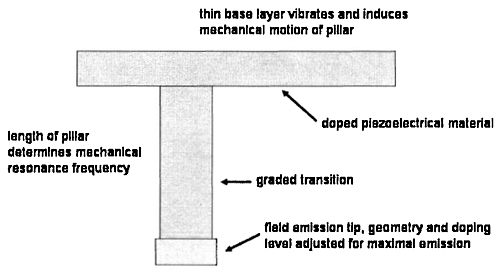Analytical Instrumentation, Methods & Materials

Improved Sensor Enables Sensitive Detection of Large Molecules in Mass Spectrometry
WARF: P05110US
Inventors: Robert Blick, Michael Westphall, Lloyd Smith
The Wisconsin Alumni Research Foundation (WARF) is seeking commercial partners interested in developing a new type of sensor for use in a mass spectrometer.
Overview
Mass spectrometry is a highly selective and quantitative technique that is widely used to determine the chemical composition of a sample. Applications of this analytical tool include measuring isotope ratios, characterizing proteins, determining how the body metabolizes pharmaceuticals and analyzing gases.
Mass spectrometry involves several steps. First, the atoms of interest are ionized by removing one or more electrons to form positive ions. Then the ions are accelerated so they all have the same kinetic energy. The ions are deflected by a magnetic field according to their mass, and the beam of ions is electrically detected.
To detect the ions, current technology relies on the generation of a secondary electron created during the collision of an energetic molecule with a specially prepared surface. As the molecule of interest increases in size, the generation of the secondary electron becomes much less efficient, limiting the size of the molecule that can be detected.
Mass spectrometry involves several steps. First, the atoms of interest are ionized by removing one or more electrons to form positive ions. Then the ions are accelerated so they all have the same kinetic energy. The ions are deflected by a magnetic field according to their mass, and the beam of ions is electrically detected.
To detect the ions, current technology relies on the generation of a secondary electron created during the collision of an energetic molecule with a specially prepared surface. As the molecule of interest increases in size, the generation of the secondary electron becomes much less efficient, limiting the size of the molecule that can be detected.
The Invention
UW-Madison researchers have developed a new type of sensor for use in a mass spectrometer. Because this sensor does not require the molecule of interest to generate a secondary electron for detection, it avoids the size limit and is capable of detecting larger molecules with more sensitivity than currently available technology.
This device consists of a thin membrane with nano-electromechanical systems (NEMS) pillar resonators distributed in an array fashion on its inner surface. The membrane is set in motion to cause the pillar resonators to vibrate. The vibrational state of these pillars controls the spatial distribution of the electrons that are emitted. Then the molecule of interest interacts with the receiving surface of the membrane, changing the resonance frequency of at least one pillar and altering the electron emission. To sense the molecule, this change can be detected using a fluorescent film or other method.
This device consists of a thin membrane with nano-electromechanical systems (NEMS) pillar resonators distributed in an array fashion on its inner surface. The membrane is set in motion to cause the pillar resonators to vibrate. The vibrational state of these pillars controls the spatial distribution of the electrons that are emitted. Then the molecule of interest interacts with the receiving surface of the membrane, changing the resonance frequency of at least one pillar and altering the electron emission. To sense the molecule, this change can be detected using a fluorescent film or other method.
Applications
- Detection and analysis of molecules with large molecular mass, such as proteins, peptides or DNA
Key Benefits
- Capable of detecting, sensing and analyzing molecules that range from a few Daltons to 10s of megadaltons
- Unlike current detectors, the sensitivity does not decrease as the size of the molecule of interest increases.
- Can be used to detect single molecules or packets of molecules with high temporal resolution
- Compatible with time-of-flight mass spectrometry, ion traps, triple quads and Fourier Transform mass spectrometry (FTMS)
- Can be used for environmental sensing and liquid phase assay applications
Stage of Development
The development of this technology was supported by WARF Accelerator. WARF Accelerator selects WARF's most commercially promising technologies and provides expert assistance and funding to enable achievement of commercially significant milestones. WARF believes that these technologies are especially attractive opportunities for licensing.
Additional Information
For More Information About the Inventors
Tech Fields
For current licensing status, please contact Jennifer Gottwald at [javascript protected email address] or 608-960-9854
Figures
